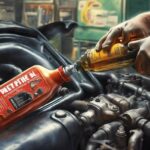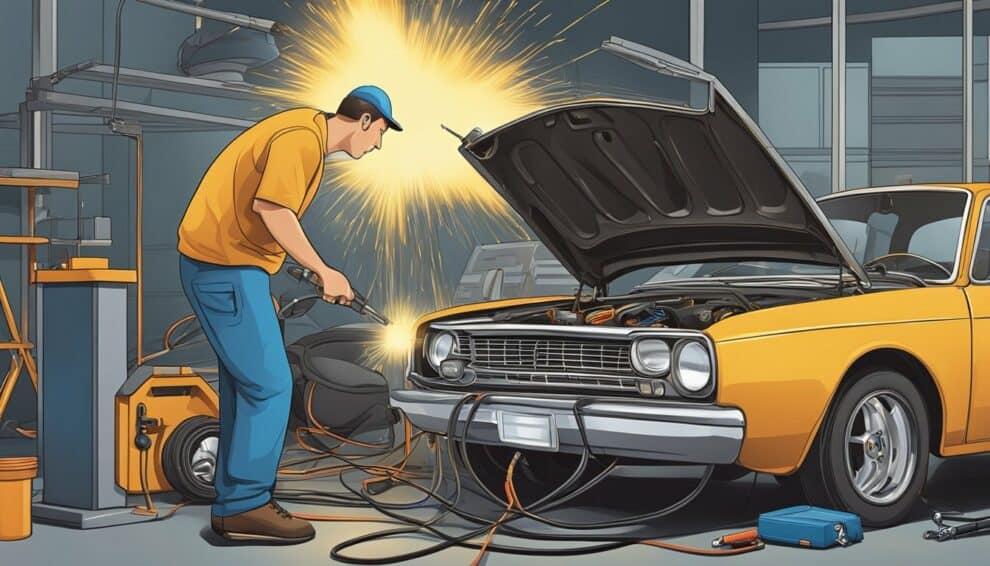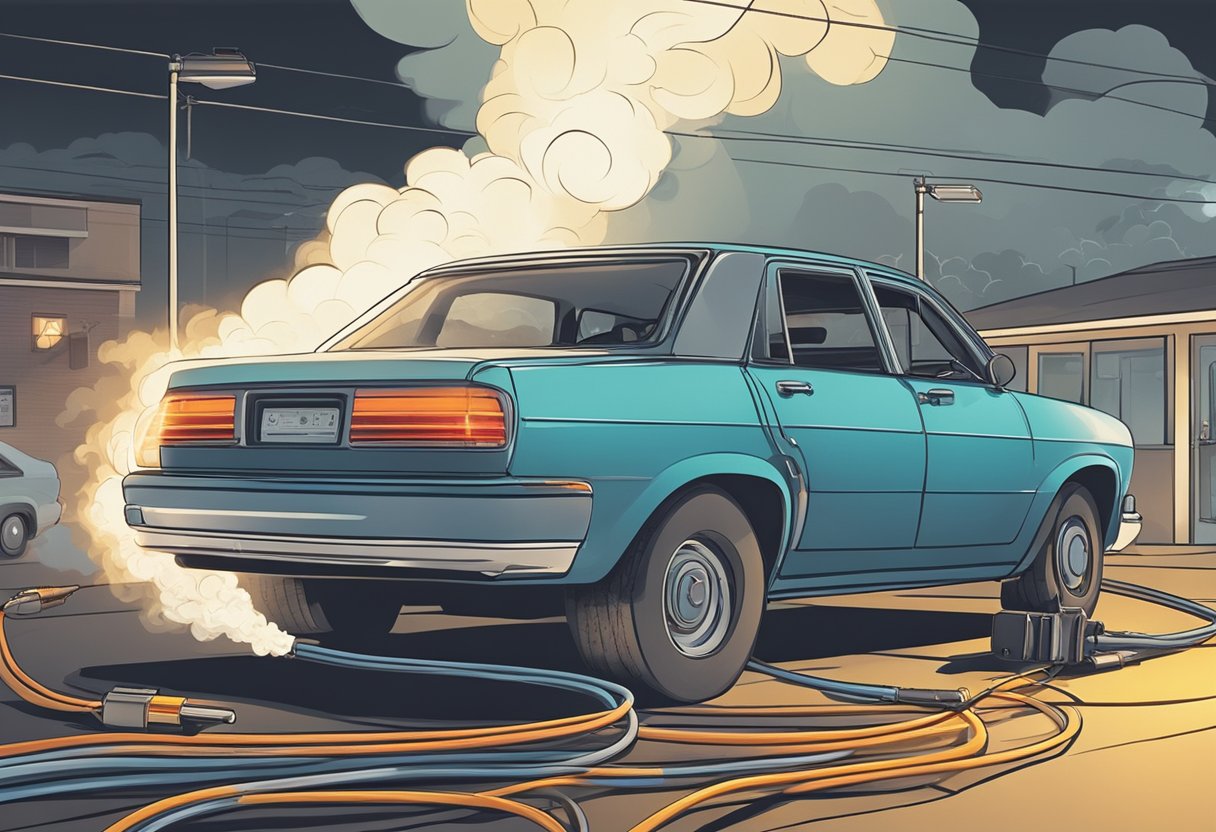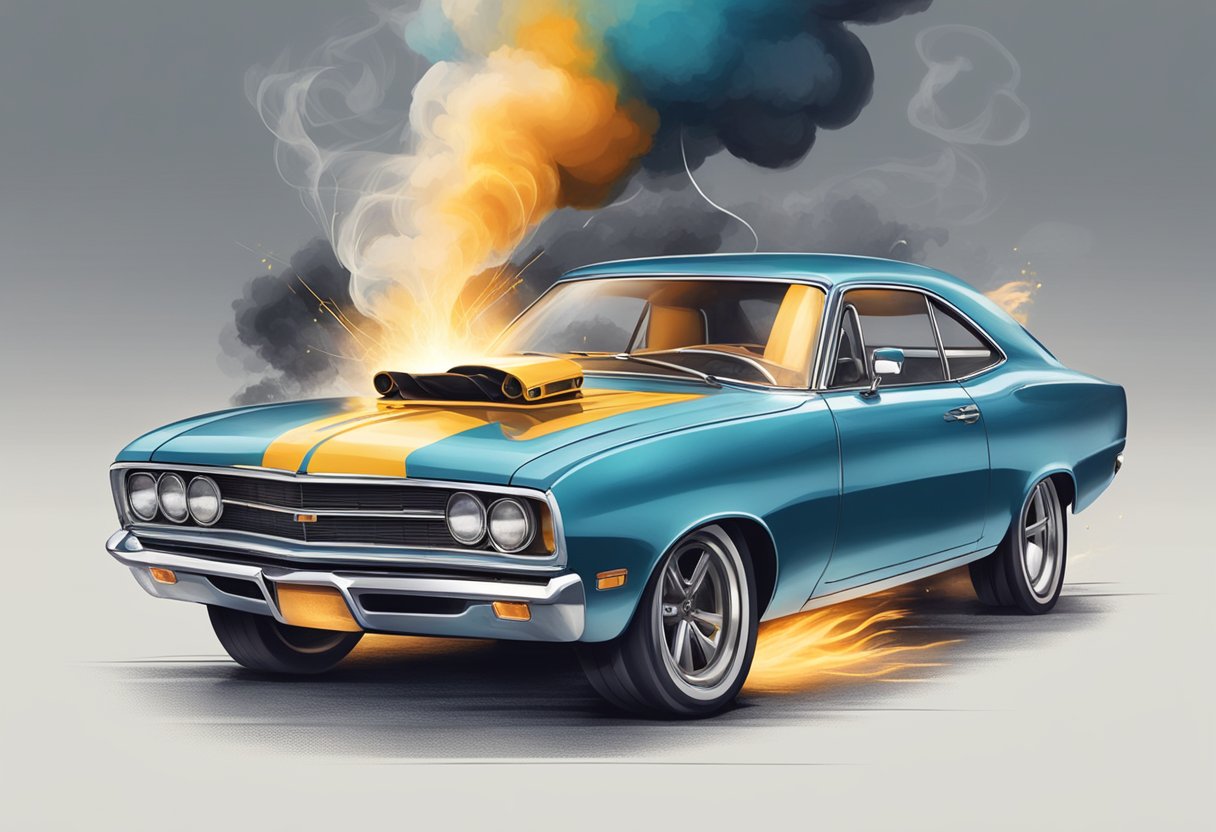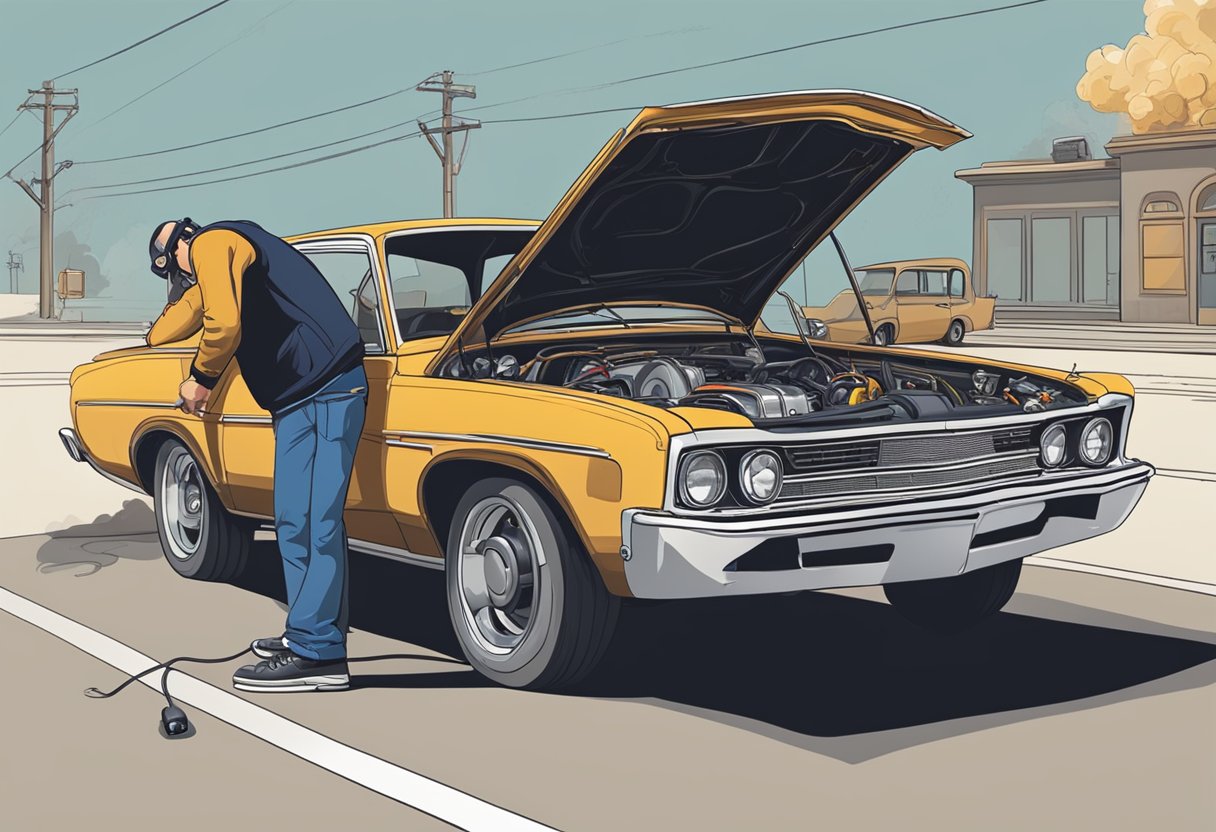Jumpstarting a car is a common occurrence for many drivers. Whether it’s because of a dead battery or a simple mistake like leaving the lights on, a jumpstart can get you back on the road quickly. However, what happens when a jumpstart goes wrong? Specifically, what are the risks of reversing jumper cables?
Reversing jumper cables is a mistake that can have serious consequences. When the cables are connected incorrectly, the flow of electricity is reversed, which can damage both vehicles’ electrical systems. This can result in expensive repairs and even render the vehicles undrivable. In addition to the damage to the vehicles, there is also a risk of injury to those involved in the jumpstart.
Understanding Jumper Cables
Jumper cables are an essential tool for jumpstarting a dead battery. They are used to transfer power from a healthy battery to a dead battery, allowing the dead battery to start the engine. However, using jumper cables improperly can lead to serious risks. In this section, we will discuss the components and functionality of jumper cables and the correct usage guidelines to ensure your safety.
Components and Functionality
Jumper cables consist of two cables with clamps at each end. The cables are usually color-coded, with one cable being red and the other being black. The red cable is the positive cable, and the black cable is the negative cable. The clamps at the end of the cables are also color-coded, with red clamps for the positive cable and black clamps for the negative cable.
The functionality of jumper cables is simple. The cables are used to transfer electrical power from a healthy battery to a dead battery. The positive clamp is connected to the positive terminal of the healthy battery, and the other end of the positive cable is connected to the positive terminal of the dead battery. The negative clamp is connected to the negative terminal of the healthy battery, and the other end of the negative cable is connected to a metal part of the dead car’s engine.
Correct Usage Guidelines
Using jumper cables incorrectly can lead to serious risks such as electrical shock, explosion, and fire. Here are some correct usage guidelines to ensure your safety:
- Make sure both cars are turned off before connecting the jumper cables.
- Check the polarity of the batteries. The positive terminal of the dead battery should be connected to the positive terminal of the healthy battery, and the negative terminal of the dead battery should be connected to a metal part of the dead car’s engine.
- Connect the positive clamp to the positive terminal of the healthy battery first, then connect the other end of the positive cable to the positive terminal of the dead battery.
- Connect the negative clamp to the negative terminal of the healthy battery, then connect the other end of the negative cable to a metal part of the dead car’s engine. Do not connect the negative clamp to the negative terminal of the dead battery.
- Start the engine of the healthy car and let it run for a few minutes. Then, try to start the engine of the dead car. If it doesn’t start, wait a few more minutes and try again.
By following these correct usage guidelines, you can avoid the risks of using jumper cables improperly and jumpstart your car safely.
Consequences of Incorrect Jumpstarting
Jumpstarting a car can be a quick and easy solution to a dead battery, but it can also be dangerous if done incorrectly. Here are some potential consequences of incorrect jumpstarting:
Electrical System Damage
If the jumper cables are connected incorrectly, it can cause damage to the electrical system of both vehicles. This can result in expensive repairs and even render the vehicles inoperable. Always make sure to connect the cables properly, following the instructions in your vehicle’s owner’s manual.
Battery Explosions
Connecting the jumper cables incorrectly can also cause the battery to explode. This is because when the cables are connected, they create a spark. If there is any hydrogen gas present near the battery, the spark can ignite the gas and cause an explosion. Battery explosions can cause serious injury or even death. To reduce the risk of explosion, make sure to keep the area around the battery well-ventilated and avoid smoking or using any open flames nearby.
Personal Injury Risks
Jumpstarting a car can also pose personal injury risks if not done correctly. If the cables are not connected properly, they can come loose and cause a spark, which can lead to burns or electrical shock. Always wear gloves and eye protection when jumpstarting a car, and make sure to follow the instructions carefully.
In summary, jumpstarting a car can be a quick and easy solution to a dead battery, but it’s important to do it correctly to avoid potential consequences. Always follow the instructions in your vehicle’s owner’s manual and take the necessary precautions to ensure your safety and the safety of others around you.
Preventative Measures
Safety Precautions
When jumpstarting a car, there are several safety precautions you should take to prevent any accidents or injuries. First, make sure both vehicles are turned off and the keys are removed from the ignition. Next, wear protective gloves and eye goggles to prevent any acid or debris from getting in your eyes or on your skin. Additionally, keep a fire extinguisher nearby in case of a fire.
Proper Connection Procedures
To prevent any damage to your vehicle or electrical system, it is important to follow proper connection procedures when jumpstarting your car. First, connect the positive (red) cable to the positive terminal on the dead battery, then connect the other end of the positive cable to the positive terminal on the working battery. Next, connect the negative (black) cable to the negative terminal on the working battery, and then attach the other end of the negative cable to a metal surface on the dead car, away from the battery. Do not connect the negative cable to the negative terminal on the dead battery, as this can cause a spark and ignite any gas fumes that may be present.
By following these safety precautions and proper connection procedures, you can minimize the risks associated with jumpstarting a car and ensure a successful jumpstart.
How can Reversing Jumper Cables Lead to Jumpstarting Gone Wrong?
Reversing jumper cables is a recipe for disaster when jumpstarting a car. The risk of damaging the electrical system or causing a dangerous spark is high. Just like the legendary smokey bandit trans am, taking the wrong approach can lead to a jumpstarting gone wrong. Always double-check the cable connections.
Troubleshooting Common Issues
When jumpstarting a car, there are a few common issues that can arise. Here are some troubleshooting tips to help you identify and resolve these issues.
Identifying Reverse Polarity
One of the most common issues when jumpstarting a car is connecting the cables in reverse polarity. This can cause serious damage to both vehicles and even result in injury. To avoid this, always remember the acronym “RED to POSITIVE, BLACK to NEGATIVE.”
If you accidentally connect the cables in reverse, you may notice a few signs. The car may not start, or it may start but run poorly. You may also notice smoke or sparks coming from the battery. In some cases, the battery may even explode.
To resolve this issue, disconnect the cables immediately and inspect the battery for damage. If the battery appears to be damaged, do not attempt to jumpstart the car again. Instead, have it towed to a mechanic for further inspection.
Resolving Connection Errors
Another common issue when jumpstarting a car is connection errors. This can occur if the cables are not securely attached to the battery terminals or if there is corrosion on the terminals.
To avoid this, always make sure the cables are securely attached and the terminals are clean before attempting to jumpstart the car. If you notice corrosion on the terminals, you can use a wire brush or a mixture of baking soda and water to clean them.
If the car still does not start after attempting to jumpstart it, there may be a deeper issue with the battery or the electrical system. In this case, it is best to have the car inspected by a mechanic to avoid further damage or injury.
By following these troubleshooting tips, you can avoid common issues when jumpstarting a car and ensure a safe and successful jumpstart.
Professional Assistance and Resources
If you are not confident in jumpstarting your car or if you encounter any issues during the process, it is best to seek professional assistance. Many auto repair shops and roadside assistance services offer jumpstarting services.
Roadside assistance services, such as AAA, offer jumpstarting services as part of their membership benefits. Some insurance companies also offer roadside assistance as part of their policies. Be sure to check with your insurance provider to see if you have this coverage.
If you prefer to do it yourself but want guidance, there are resources available to help you. The owner’s manual for your vehicle should have instructions on how to jumpstart your car. You can also find step-by-step guides and videos online.
It is important to note that even with professional assistance or guidance, there are still risks involved with jumpstarting a car. It is always best to exercise caution and follow proper safety protocols.
As an Amazon Associate we earn from qualifying purchases.


